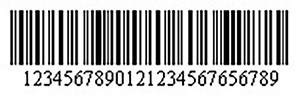Which barcode is right for you?

So, you’re considering purchasing barcoding software or changing from your current software, and you’ve just realized how many options there are out there. The question you’ve likely run against at this point is, which is right for you? The answer is, it depends on how much data you need to store on it. In this blog, I’ll provide a brief overview of barcoding, along with some resources to help you out. If, by the end of this blog, however, you’re still not sure, never fear: ArcherPoint and Dynamic Manufacturing Solutions co-hosted a webinar, Bar Coding in Dynamics NAV, which you can view on demand. We reviewed available technologies, common problems to watch out for in projects, and what you can expect once you’re live.
According to Sage Data, one-dimensional—also called 1D or linear—barcodes are sufficient for most applications. However, two-dimensional (2D) barcodes are becoming more popular. I found this article interesting: How Much Data Can a QR Code Store?
And here’s some information about the differences between the two:
The Best Answer
Barcodes representing data in the widths (lines) and the spacings of parallel lines such as Code128, Code 39, and UPC, are referred to as Linear or 1D (one-dimensional) barcode symbologies.
Linear Barcode:
- Holds less than 85 characters (symbology specific character limit).
- A majority of customers are set up to use Linear barcodes (Linear scanner).
- Creates a wide barcode.
Figure 1. Example of a Linear Code 128 with 25 characters.
Linear Barcode Symbologies:
Two-dimensional (2D) Barcodes
Two-dimensional (2D) barcodes, such as Data Matrix, PDF417, and QR Code, may have patterns of squares, dots, hexagons and other geometric patterns. While maintaining a fairly small size, these barcode types hold much more data than linear barcodes. 2D barcodes can hold hundreds of characters. 2D barcodes are best for storing additional data, such as lot tracking and serial numbers.
2D Barcode:
- Can hold hundreds of characters.
- Requires a 2D barcode scanner.
- With the same data, creates a smaller barcode than Linear.
Figure 2. Example of a 2D Data Matrix with 25 characters.
2D Barcode Symbologies:
- Data Matrix
- QR Code
- Aztec
- PDF417
- Maxicode
The size difference of popular barcode types is compared in the Barcode Symbology Evaluation and Test Sheet. You can also find more on barcode types, including variations of the 3D barcode on mobilio’s site as well.
It may seem confusing, but barcoding experts like Mark Hamblin, President of Dynamic Manufacturing Solutions, presents a practical approach and considerations for your barcoding project in the webinar recording. Enjoy!


